On its 50th anniversary, Stanley Kubrick and Arthur C. Clarke’s science fiction epic, 2001: A Space Odyssey is still considered one of the most iconic films in history. How is it this film has survived for so long? It has many virtues, from its provocative ideas to some still convincing effects work, but perhaps its most lasting power comes from the film’s most significant character, who after fifty years, audiences have still never seen.
The Driving Force
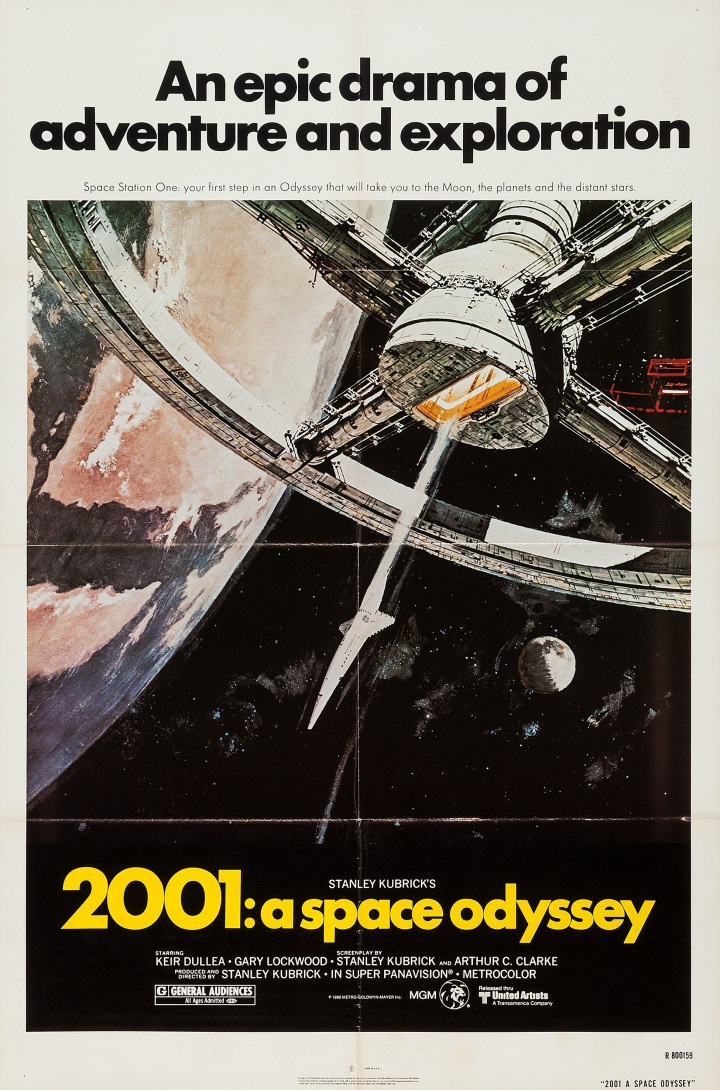
2001 told a relatively simple story of mankind finding evidence of an intelligence beyond the Earth, and their subsequent efforts to investigate. Though the precise motives of this intelligence remain unclear, they did leave clues behind for the characters to find. We learn they created a featureless machine known as the Monolith. This machine was used to aid in humanity’s evolution before an identical one is buried on the Moon in the hopes that humanity would someday discover it and trace it back to its origin.
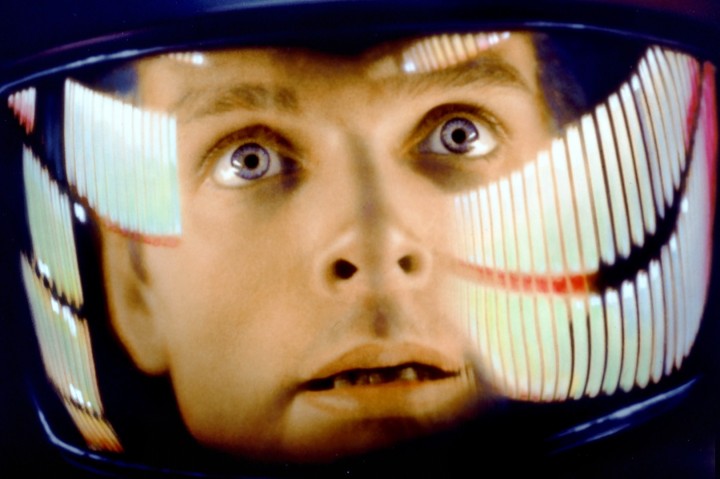
The intelligence behind the Monolith is the biggest mystery of the film. We never see who or what is responsible for building these machines, nor do we learn the full extent of their seemingly vast capabilities. In spite their lack of screen presence, this mysterious intelligence is the driving force of the film. How can an unseen entity have such power over a story?
The Monolith
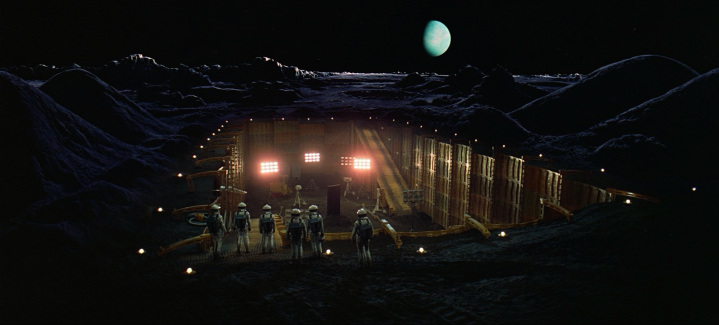
One way is through the Monolith itself. The creators of the Monolith regularly use the machine to either manipulate or guide humanity, thereby powering the plot of the film. The strange machine becomes a recurring motif, first appearing in the prologue where it helps primitive man achieve higher intelligence, then later on the Moon where it directs those who discovered it to find where it came from. Later Monoliths similarly guide the characters through the story, taking them perhaps beyond the edge of the universe itself.
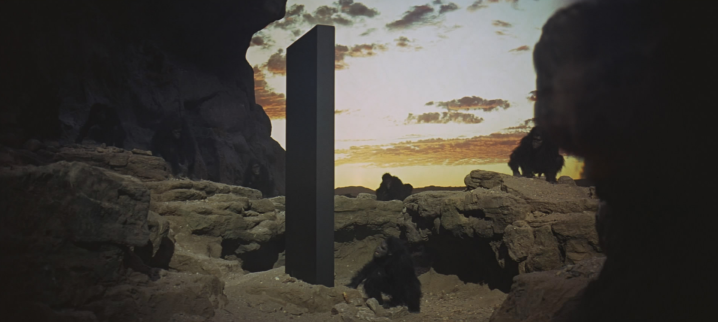
One way the Monolith is effective is how simple its design it. It is simply a large black block without any distinguishable features apart from its edges. There are no lights, buttons, emblems, or markings of any sort. Even its surface doesn’t reflect light terribly well, so not even surrounding light will adorn it with markings. This minimalist design leaves little for the audience to grasp onto. The mystery of the Monolith itself lends well to the anonymity of its makers.
Power of Suggestion
Originally both Kubrick and Clarke wanted to show the Monolith’s creators. The creatures went through several designs, ranging from humanoid to almost jellyfish-like. Many scientists were consulted for the book and film, among whom was the famed Carl Sagan. It was actually Sagan who suggested that showing the aliens would be a detriment to the film and recommended that suggesting them would be more powerful. After continuous failed design efforts, Kubrick and Clarke took Sagan’s advice and opted to keep the Monolith’s makers in the dark.
It cannot be overstated how beneficial this decision was. For one, any reveal would have inevitably been disappointing. The film builds up this unseen intelligence too well for any payoff to live up to it. Perhaps more important however was the idea that this intelligence was unfathomable to mankind, every bit as unfathomable as we would be to an amoeba. In suggesting rather than showing them, the film keeps them forever present, but always just out of reach. This creates an almost omnipotent presence and makes them seem all the more powerful.
Demonstrations of Power
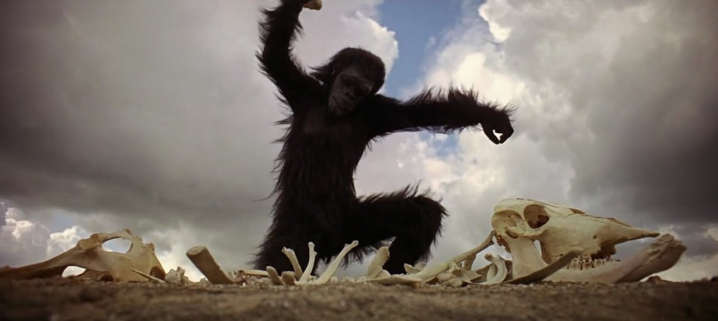
The intelligence behind these machines may go unseen, but their capabilities are on full display. The first demonstration of these abilities comes in the prologue, where a tribe of humanity’s ape-like ancestors come in contact with a Monolith. Mere hours after touching the object, the apes develop the use of tools, which they use to take back territory stolen by a rival tribe. In one of the film’s most famous moments, an ape throws a bone skyward, which is then match-cut to a satellite floating above the Earth. With a mere touch, this mysterious intelligence has guided a tribe of primitive hunter-gatherers to the stars.
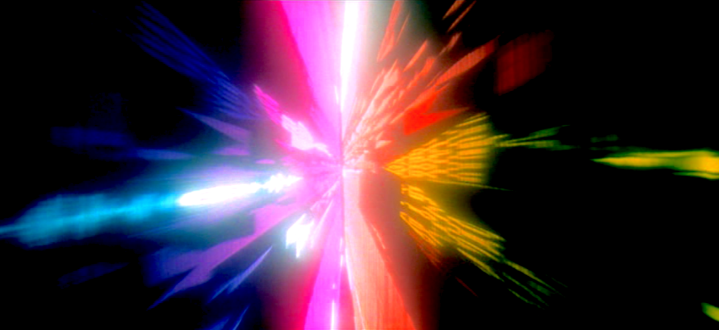
Perhaps the biggest indication of this civilization’s power is the is the famous ‘Star Gate’ sequence. Towards the film’s conclusion, one character is drawn into a portal created by the makers of the Monolith, whisked across impossibly vast distances at impossibly fast speeds, all while suffering no ill effects. This is in sharp contrast to the travels shown by the human characters previously, who still struggle to survive in the expanse of space. In spite of humanity difficulties surviving in our own Solar System, those behind the Monolith seem capable of bending space itself on a whim. The Star Gate sequence not only showed the vastness of the universe, but also how someone, or something, had mastered it.
A Question Still Unanswered
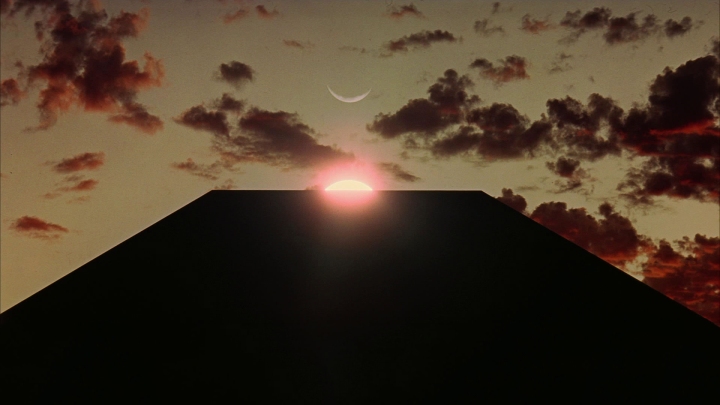
2001 has a proud legacy of memorable characters and iconic imagery, but perhaps its proudest legacy is how it showed the power of the question. This film posed a question that nearly half a century later has still gone unanswered. For fifty years, that great mystery has left audiences wondering, and with that wonder comes discussion. That has proven a far grander expression than even the best answer Kubrick and Clarke could have given. It’s the act of wondering that keeps the wonder alive.
Thanks to David Spada for alien concept photos.
Want more science-fiction related news? Check out these articles from some of our top contributors!
Why ‘Alien: Isolation’ Is One of the Best Alien Sequels
While Waiting for Season 2 of ‘Westworld,’ Check Out the Classic that Started It All



3 thoughts on “Monolith of Mystery: How ‘2001: A Space Odyssey’ Celebrates The Unknown – ScreenHub Entertainment”